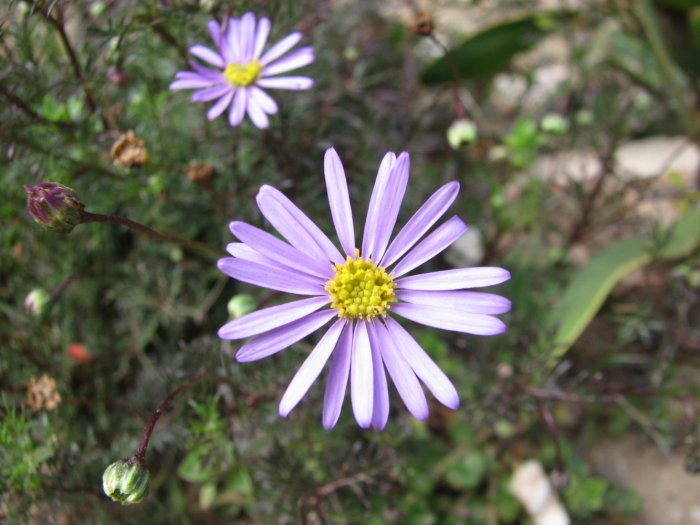Cut-Leaf Daisy
(Brachyscome multifida)
Cut-Leaf Daisy (Brachyscome multifida)
/
/

Melburnian
CC BY 3.0
Image By:
Melburnian
Recorded By:
Copyright:
CC BY 3.0
Copyright Notice:
Photo by: Melburnian | License Type: CC BY 3.0 | License URL: https://creativecommons.org/licenses/by/3.0 | Uploader: Melburnian | Publisher: Wikimedia Commons | Title: Brachyscome_multifida_BR.jpg | Notes: {{Information |Description={{en|1=''[[Brickellia californica]]'' X Ranch: Yerba Buena roadside, Santa Monica Mountains National Recreation Area, California, USA.}} |Source=http://www.nps.gov/samo/naturescience/wildflowers%2Ehtm?eid=105281&aId=58 |






















Estimated Native Range
Summary
Brachyscome multifida, commonly known as Cut-Leaf Daisy, is an evergreen perennial herb native to open grasslands and forest margins in Eastern Australia. It typically grows to 45 cm in height with an erect, matting growth habit. The foliage is fine and deeply divided, creating a delicate texture. Flowerheads are borne on peduncles ranging from 4 to 40 cm long, with ray florets in shades of mauve, pink, or white, each 7 to 10 mm long. The main flowering season is from early autumn to mid-winter, although blooms may appear sporadically throughout the year, adding to its horticultural appeal.
Cut-Leaf Daisy is valued for its extended blooming period and daisy-like flowers, which provide a soft, whimsical touch to garden settings. It is widely used for mass plantings, hanging baskets, border edges, and as a spillover plant on retaining walls. This species thrives in a variety of soil conditions and is drought-tolerant, though it benefits from occasional watering during prolonged dry spells. It prefers full sun but can tolerate partial shade. While frost-tolerant, its foliage may suffer from frost burn. Propagation is commonly achieved through cuttings, which root easily, or by layering. Seed propagation is possible but tends to have a low germination rate. In terms of maintenance, it is a low-demand plant, requiring minimal watering and thriving in soils with medium to fast drainage.CC BY-SA 4.0
Cut-Leaf Daisy is valued for its extended blooming period and daisy-like flowers, which provide a soft, whimsical touch to garden settings. It is widely used for mass plantings, hanging baskets, border edges, and as a spillover plant on retaining walls. This species thrives in a variety of soil conditions and is drought-tolerant, though it benefits from occasional watering during prolonged dry spells. It prefers full sun but can tolerate partial shade. While frost-tolerant, its foliage may suffer from frost burn. Propagation is commonly achieved through cuttings, which root easily, or by layering. Seed propagation is possible but tends to have a low germination rate. In terms of maintenance, it is a low-demand plant, requiring minimal watering and thriving in soils with medium to fast drainage.CC BY-SA 4.0
Plant Description
- Plant Type: Herb
- Height: 1-1.5 feet
- Width: 1.5-4 feet
- Growth Rate: Moderate
- Flower Color: Purple, White
- Flowering Season: Spring, Summer
- Leaf Retention: Evergreen
Growth Requirements
- Sun: Full Sun
- Water: Low
- Drainage: Medium, Slow, Fast
Common Uses
Bee Garden, Border Plant, Butterfly Garden, Groundcover, Low Maintenance, Potted Plant, Rock Garden, Showy Flowers, Street Planting
Natural Habitat
Native to open grasslands and forest margins in Eastern Australia
Other Names
Common Names: Rocky Daisy, Hawkesbury Daisy, Blåkrage
Scientific Names: , Brachyscome multifida, Brachycome multifida, Brachyscome glabra, Brachyscome tenera,
GBIF Accepted Name: Brachyscome multifida DC.